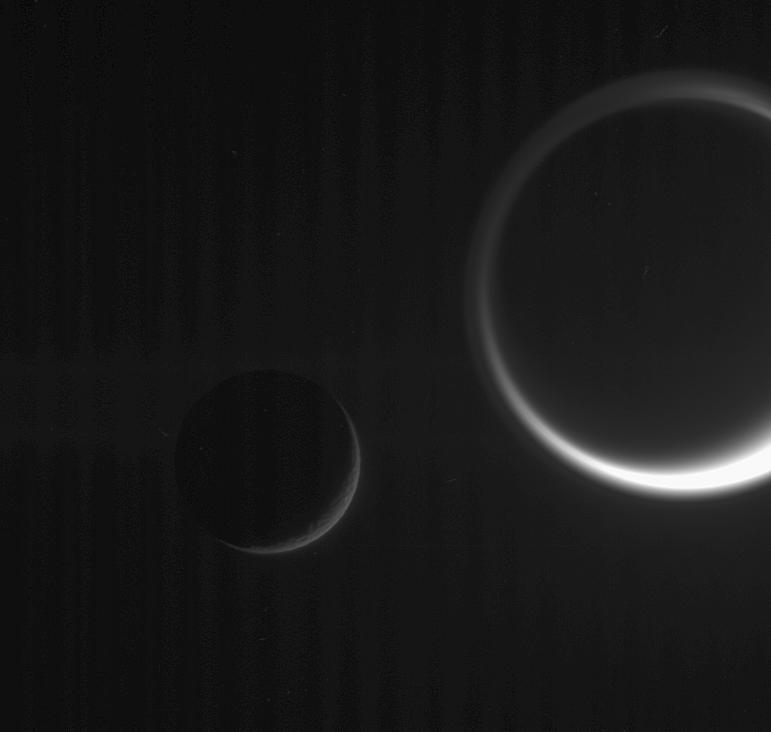Saturnian Specters

| PIA Number | PIA08124 |
|---|---|
| Language |
|
Ghostly details make this dark scene more than just a beautiful grouping of two Saturn moons, with Tethys on the left and Titan on the right. In Titan's thick and inflated atmosphere, the detached high haze layer can be seen, as well as the complex northern polar hood (at the top). Images like this one can help scientists make definitive estimates of the altitudes to which the high haze extends.
The faint vertical banded pattern is a type of noise that usually is removed during image processing. Because this image was processed to enhance the visibility of details in Titan's atmosphere and the faint G ring, the vertical noise was also enhanced.
Titan is Saturn's largest moon, at 5,150 kilometers (3,200 miles) across. Tethys is 1,071 kilometers (665 miles) across.
This view was obtained in visible light with the Cassini spacecraft narrow-angle camera on Jan. 19, 2006, at a distance of approximately 2.4 million kilometers (1.5 million miles) from Titan and 1 million kilometers (600,000 miles) from Tethys. The image scale is 14 kilometers (9 miles) per pixel on Titan and 6 kilometers (4 miles) per pixel on Tethys.
The Cassini-Huygens mission is a cooperative project of NASA, the European Space Agency and the Italian Space Agency. The Jet Propulsion Laboratory, a division of the California Institute of Technology in Pasadena, manages the mission for NASA's Science Mission Directorate, Washington, D.C. The Cassini orbiter and its two onboard cameras were designed, developed and assembled at JPL. The imaging operations center is based at the Space Science Institute in Boulder, Colo.
For more information about the Cassini-Huygens mission visit http://saturn.jpl.nasa.gov . The Cassini imaging team homepage is at http://ciclops.org .
Credit: NASA/JPL/Space Science Institute
